#data collection instruments
Explore tagged Tumblr posts
Text
The obscene amount of envy that I feel towards telescopes and satellites needs to be studied
#why can’t I be the one floating in space and collecting data :(#sigh#oh to be an astronomical instrument#space#astronomy
2 notes
·
View notes
Text
5 Methods of Data Collection for Quantitative Research
Discover five powerful techniques for gathering quantitative data in research, essential for uncovering trends, patterns, and correlations. Explore proven methodologies that empower researchers to collect and analyze data effectively.
#Quantitative research methods#Data collection techniques#Survey design#Statistical analysis#Quantitative data analysis#Research methodology#Data gathering strategies#Quantitative research tools#Sampling methods#Statistical sampling#Questionnaire design#Data collection process#Quantitative data interpretation#Research survey techniques#Data analysis software#Experimental design#Descriptive statistics#Inferential statistics#Population sampling#Data validation methods#Structured interviews#Online surveys#Observation techniques#Quantitative data reliability#Research instrument design#Data visualization techniques#Statistical significance#Data coding procedures#Cross-sectional studies#Longitudinal studies
1 note
·
View note
Text
"You saw it?"
"For a second. Yeah. I saw one."
"Start at the beginning."
"Hoo. Okay. Uhhh... It was 77. I think. I was air force. Or, hypnoengineering support staff contracted to help out around St. Louis."
"That's how you came into your supply of JVH-1"
"It was JVH-11 actually, and yeah, the fuckin, uh- the requisitions officer at Scott was an old buddy of mine. We used to fuck around in college before I, you know-"
"Yes I understand."
"I worked records for Sears-Roebuck, I had all the accounting expertise, as well as a ready supply of LSD."
"How did you start?"
"Oh it was easy at first. Really just selling off phials of the new experimental stuff to finance guys. They'd go nuts for the stuff, pay top dollar for it too. Hell, I could get 100$ for a milliliter. Made it easy to keep my contacts bought in and re-invested. Honestly I don't think the req office would even know that we were skimming if they weren't in on it.
But, you know how it is with hypnoregulation. Transchronological market data is worth it's weight in diamond. It started with the odd photo of a 2q-week readout, then biometric data, then, uh- then. Well, we decided to try it ourselves."
"You attempted full sub-finantial emmanation?"
"No no god no, what're you nuts? No, see. We figured if one person can meld their brain with the market, we just had to get as close as we could to that guy, and mark the twain, hypnologically speaking."
"Mark the twain?"
"Yeah, see, okay. A plutophant in full emmanation isn't like us. We exist at a single point in time, an R1 rational market actor. But they exist in multiple points in time, back in 77, I think the government could hit R6 with that analogue tech. Most people can hit R2 with a single hit of JVH-1, with practice you can hit R3, but anything higher than R3 takes a pretty serious support team. But here's the thing, I had a whole cadre of co-implicated members of a military grade hypnoengineering support team. All we needed was the space."
"The warehouse. Schaeffer Marble and Tile was it?"
"Bingo. See here's the thing. You know why the government had to start building those special regulation temples? It's not just for security. Once you crack the R6 barrier, Plutophants start leaving what's called a wake. You know, like a fuckin, uh, like a boat. They're imperceptible to normal people, but if you have sensitive enough instruments or, say, a person in the edge of sub-market emmanation.
See the government didn't know at the time, but if you balanced the drugs just right, and kept someone right on the edge of R4, you could actually read the plutophant's interpretations by their wake rather than their direct neurofeedback. It's not nearly as precise, but if you have a good team and you know what to look for, you can get some really, really valuable market data that way."
"And your co-worker?"
"You mean Mills? Fuck. Yeah...Mills. Right."
"Take your time."
"No, no I'm good. It's... It's uh, It's dangerous. Brains aren't meant to take that much JVH-11 all at once. We could stay on R4, but what we didn't have was a recovery team, or a medical team, or recon team. It was me, Mills, Israel, Connaught, and Marsh. The five of us were the only ones in the soup. Bruso was running the machines and Lasker was monitoring the readout."
"Can you tell us what happened?"
"Yeah. Yeah. It was a normal intrusion. Hypnogrid emmanation is pretty simple with our tech and support. Sedation was all green, hypnoinduction was green. Smooth as silk. Landed about 40 minutes from our work location. We had the codes from the IRSAW people that morning, all we had to do was maintain hypnoinduction for 40 minutes while traversing the colon and we'd be able to-"
"I'm sorry, colon?"
"Oh come on. Colon. Collective Unconscious. Col-Un. Colon."
"I- of course. Continue."
"Hey, have you ever been on a dive before?"
"Can we focus on your statement?"
"It's important. I need to know if this next bit is gonna make sense to you or not."
"I've undergone basic anti-intrusion training standard for IRS investigation task force officers."
"So you've done safe dives. White room? Castle training? Putting up the wall? All that jazz?"
"That's correct."
"Did they ever tell you why it's dangerous to perform off-site hypnoincursion in meta-unstsble hypnospace?"
"They did."
"Well they're lying...don't look at me like that. I'm not bullshitting you. They're lying...there's...there's shit out there okay? There's things out there."
"Mills?"
"Yeah. Mills. Uh..."
"Take your time."
"Yeah yeah. Quit interruptin me. Mills... Uh, yeah so we were T-Plus 30 into the dive. Bruso gives us a heads up that some hypnoflora is headed our way, but can't get a read on mass. Says we should steer clear, but we are so close. Israel had handled some hypnoflora before, so we weren't worried. But it was... I dunno. I can't explain."
"Do your best."
"Like. Okay. Meta-unstsble dives are fucked. They're acid trips. The St. Louis hypnoscape already doesn't look normal, but Scott Base looked like some kinda bastard lovechild of a medieval castle and a seashell, all twisting up into itself. The streets were a chessboard, and all the streetlights we're these tall kinda mannequin lookin' things holding a tiny sun in their hand. Everything is fucked, it's all topsy turvy. But it's okay, because it's meta-unstable hypnospace, its not SUPPOSED to be normal. And then there was a Red Sock."
"Like for the feet?"
"No. Like. In the middle of this fucked up dreamscape, there's suddenly a batter for the Boston Red Sox. He's standing there, maybe 50 feet away. He's got a bat in one hand and a mitt in the other, and he's just kinda walking towards us. Nobody really knew what to do. It didn't look dangerous, but something wasn't right. It didn't fit. We just kinda stood there, looking at the thing. Israel starts talking to Bruso, asking him what to do. Suddenly, Bruso is screaming at us, telling us to book it. He's screaming into the com, telling us to prepare for de-emmanation. Nobody knows what's happening. Israel is suddenly standing between Mills and the Red Sock, and..."
"Any information you can recall could be of use."
"It's...it's mostly feeling at this point. You ever been having a normal dream? Like, a good, normal dream? And suddenly you realize that something is really, really wrong? There's signs. For me? It's that the lights go out. Suddenly day turns to night, and something about this batter just makes me want to curl up and hide. Suddenly, moving through the world is like trying to swim through molasses. I try to run, but nothing moves, and everything is dark. The world is shifting. There's shadows under the bathroom door that can't be happening. A man who looks like Jesus. An old and terrible house and an old man with no name whose face I can't remember. The batter swings at Mills and she just...vanishes. Shes gone. Bruso pulls us out a second later."
"So this, batter killed Ms. Mills?"
"No."
"No?"
"No. We get out, she's comatose. Whatever that thing did to her, she was still in hypnospace. I gave her a hot shot of barbiturates. Her brain activity slowed to R0 after about 90 seconds."
1K notes
·
View notes
Text
25 Years of Exploring the Universe with NASA's Chandra Xray Observatory
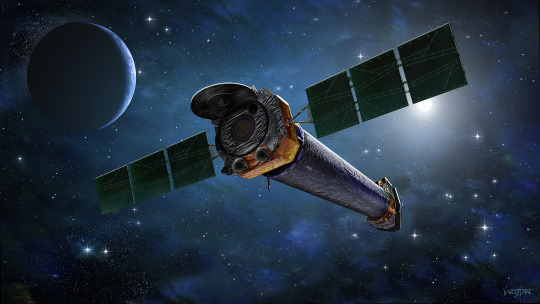
Illustration of the Chandra telescope in orbit around Earth. Credit: NASA/CXC & J. Vaughan
On July 23, 1999, the space shuttle Columbia launched into orbit carrying NASA’s Chandra X-ray Observatory. August 26 marked 25 years since Chandra released its first images.
These were the first of more than 25,000 observations Chandra has taken. This year, as NASA celebrates the 25th anniversary of this telescope and the incredible data it has provided, we’re taking a peek at some of its most memorable moments.
About the Spacecraft
The Chandra telescope system uses four specialized mirrors to observe X-ray emissions across the universe. X-rays that strike a “regular” mirror head on will be absorbed, so Chandra’s mirrors are shaped like barrels and precisely constructed. The rest of the spacecraft system provides the support structure and environment necessary for the telescope and the science instruments to work as an observatory. To provide motion to the observatory, Chandra has two different sets of thrusters. To control the temperatures of critical components, Chandra's thermal control system consists of a cooling radiator, insulators, heaters, and thermostats. Chandra's electrical power comes from its solar arrays.
Learn more about the spacecraft's components that were developed and tested at NASA’s Marshall Space Flight Center in Huntsville, Alabama. Fun fact: If the state of Colorado were as smooth as the surface of the Chandra X-ray Observatory mirrors, Pike's Peak would be less than an inch tall.

Engineers in the X-ray Calibration Facility at NASA’s Marshall Space Flight Center in Huntsville, Alabama, integrating the Chandra X-ray Observatory’s High-Resolution Camera with the mirror assembly, in this photo taken March 16, 1997. Credit: NASA
Launch
When space shuttle Columbia launched on July 23, 1999, Chandra was the heaviest and largest payload ever launched by the shuttle. Under the command of Col. Eileen Collins, Columbia lifted off the launch pad at NASA’s Kennedy Space Center in Florida. Chandra was deployed on the mission’s first day.

Reflected in the waters, space shuttle Columbia rockets into the night sky from Launch Pad 39-B on mission STS-93 from Kennedy Space Center. Credit: NASA
First Light Images
Just 34 days after launch, extraordinary first images from our Chandra X-ray Observatory were released. The image of supernova remnant Cassiopeia A traces the aftermath of a gigantic stellar explosion in such captivating detail that scientists can see evidence of what is likely the neutron star.
“We see the collision of the debris from the exploded star with the matter around it, we see shock waves rushing into interstellar space at millions of miles per hour,” said Harvey Tananbaum, founding Director of the Chandra X-ray Center at the Smithsonian Astrophysical Observatory.

Cassiopeia A is the remnant of a star that exploded about 300 years ago. The X-ray image shows an expanding shell of hot gas produced by the explosion colored in bright orange and yellows. Credit: NASA/CXC/SAO
A New Look at the Universe
NASA released 25 never-before-seen views to celebrate the telescopes 25th anniversary. This collection contains different types of objects in space and includes a new look at Cassiopeia A. Here the supernova remnant is seen with a quarter-century worth of Chandra observations (blue) plus recent views from NASA’s James Webb Space Telescope (grey and gold).
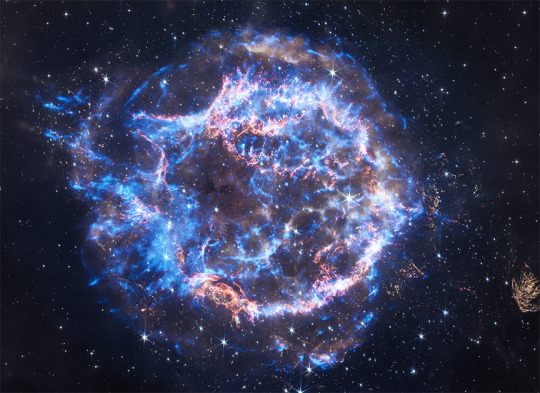
This image features deep data of the Cassiopeia A supernova, an expanding ball of matter and energy ejected from an exploding star in blues, greys and golds. The Cassiopeia A supernova remnant has been observed for over 2 million seconds since the start of Chandra’s mission in 1999 and has also recently been viewed by the James Webb Space Telescope. Credit: NASA/CXC/SAO
Can You Hear Me Now?
In 2020, experts at the Chandra X-ray Center/Smithsonian Astrophysical Observatory (SAO) and SYSTEM Sounds began the first ongoing, sustained effort at NASA to “sonify” (turn into sound) astronomical data. Data from NASA observatories such as Chandra, the Hubble Space Telescope, and the James Webb Space Telescope, has been translated into frequencies that can be heard by the human ear.
SAO Research shows that sonifications help many types of learners – especially those who are low-vision or blind -- engage with and enjoy astronomical data more.
Click to watch the “Listen to the Universe” documentary on NASA+ that explores our sonification work: Listen to the Universe | NASA+
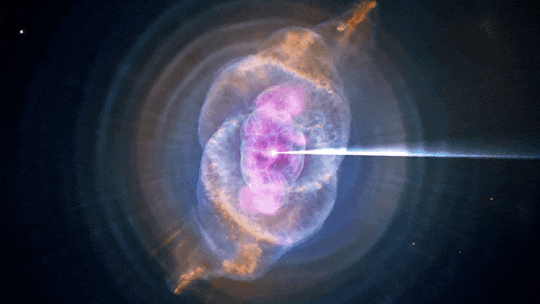
An image of the striking croissant-shaped planetary nebula called the Cat’s Eye, with data from the Chandra X-ray Observatory and Hubble Space Telescope. NASA’s Data sonification from Chandra, Hubble and/or Webb telecopes allows us to hear data of cosmic objects. Credit: NASA/CXO/SAO
Celebrate With Us!
Dedicated teams of engineers, designers, test technicians, and analysts at Marshall Space Flight Center in Huntsville, Alabama, are celebrating with partners at the Chandra X-ray Center and elsewhere outside and across the agency for the 25th anniversary of the Chandra X-ray Observatory. Their hard work keeps the spacecraft flying, enabling Chandra’s ongoing studies of black holes, supernovae, dark matter, and more.
Chandra will continue its mission to deepen our understanding of the origin and evolution of the cosmos, helping all of us explore the Universe.

The Chandra Xray Observatory, the longest cargo ever carried to space aboard the space shuttle, is shown in Columbia’s payload bay. This photo of the payload bay with its doors open was taken just before Chandra was tilted upward for release and deployed on July 23, 1999. Credit: NASA
Make sure to follow us on Tumblr for your regular dose of space: http://nasa.tumblr.com
2K notes
·
View notes
Text
BACK TO THE MOON
New footage from @FireflyAerospace shows their lunar lander’s view from approximately 60 miles (100 km) above the Moon. Blue Ghost will land at Mare Crisium, on the near side of the Moon, on March 2, no earlier than 3:34 a.m. EST (0834 UTC). All 10 NASA instruments on this flight are currently healthy and ready to operate on the lunar surface. The data that we collect from these instruments will help us prepare for crewed Artemis missions to the surface of the Moon.
374 notes
·
View notes
Text
Megapixel Survey - What do you know about them pixels?
I've been trying to write a post explaining megapixels (and Ks) for over a year now. I have had trouble gathering the data I needed to do it properly. But I just solved that problem and I want to start working on it. But I could use a little help.
Please answer the questions below. I'd ask that you not look at other answers before you give yours.
I'd like to hear from photographers and non-photographers. In fact, if you know nothing about cameras I'm most interested in your answers.
And please remember, I'm not trying to trick you or make you look foolish. And I don't want you to guess an answer based on what you feel *I* believe is correct. I'm not looking for you to impress me. I need your real answer.
Perhaps draw on your past impressions of megapixels when you were looking for a new camera or phone and what your thought process was.
I just want to know how educated people are about megapixels. And Ks for video (2K, 4K, 8K, etc). It's all the same thing.
You can answer all or none of these. Whatever you have the time or energy for. Any input is helpful. And if you do have extra time or energy, feel free to expand on your answers. Thank you!
(If you shoot more video than photos, you can answer the questions by substituting Ks for megapixels.)
Megapixel Questions
1. What advantage do you think having more megapixels gives you? (Not a trick question. There is an advantage.)
2. When you look at specs for a camera (smartphone or traditional), are megapixels the first thing you look for?
3. If you are upgrading your smartphone and the new model has more megapixels, do you feel confident the camera will perform better because of the increased megapixels?
4. What do you feel is a satisfactory amount of megapixels for a smartphone?
5. What do you feel is a satisfactory amount of megapixels for a traditional camera?
6. When you see the following image comparing a 48MP (4K video) Apple smartphone to a Samsung 200MP (8K video), does the fact that a phone has that many megapixels impress you?

7. If you were to guess a percentage, how much more detail can the 200MP camera capture than the 48MP? (Again, not a trick question, the Samsung does capture more detail.)
8. Do you feel like Apple is falling behind in their camera technology? (They only recently went above 12MP in their phones.)

9. This camera set the current record for capturing the most detail possible (outside of scientific instruments). Without googling, how many megapixels do you think it has?
That's it!
Thank you to anyone who answers. I am really hoping this will be my best photography post I've ever written. I've been collecting images and data for this for a very long time. It's actually a really fascinating topic. And I hope it will help you with your purchasing decisions.
144 notes
·
View notes
Text

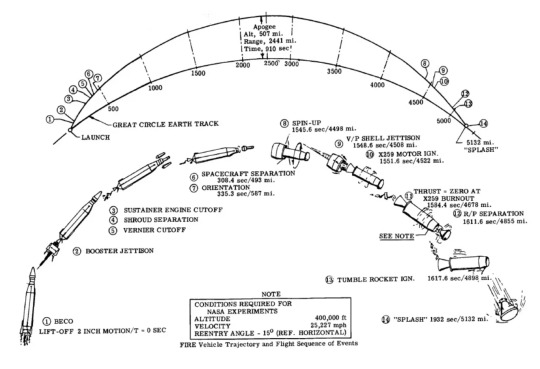

May 22, 1965: The second and final Project FIRE mission launches from Cape Canaveral
Project FIRE (Flight Investigation of the Reentry Environment) was a collection of tests that obtained data about the aerodynamic and thermal conditions of returning to Earth from the moon. FIRE II was a suborbital flight of a one-sixth model of the Apollo capsule containing multiple experimental scientific instruments. Called the "flying thermometer", it launched onboard an Atlas-Antares II rocket and was crucial in the designing and composition of the Apollo heat shield.
Read more about Project FIRE here!
86 notes
·
View notes
Text
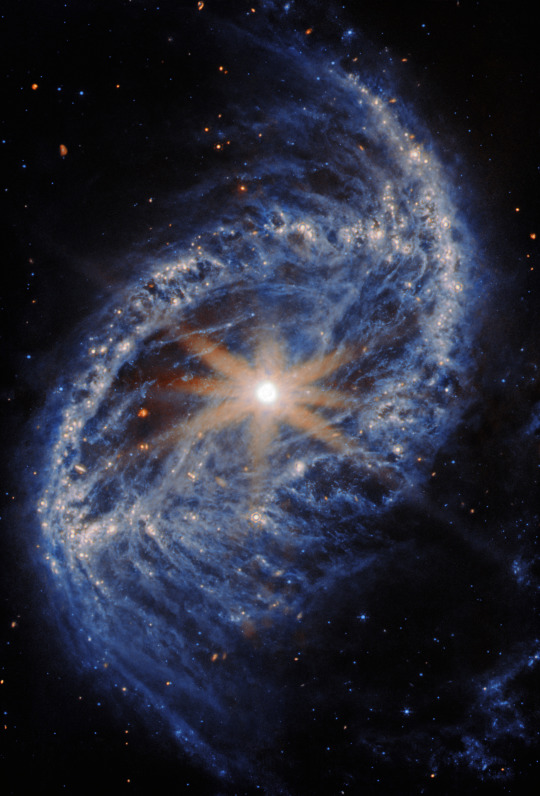
NGC 2566 (MIRI image)
The galaxy filling the frame in this NASA/ESA/CSA James Webb Space Telescope Picture of the Month is NGC 2566, a spiral galaxy located in the constellation Puppis. In this image Webb’s Mid-InfraRed Instrument (MIRI) puts the thick clouds of interstellar dust that suffuse NGC 2566 on display, as well as the galaxy’s compact, bright core.
At 76 million light-years away, NGC 2566 is considered a nearby galaxy, making it an excellent target for studying fine details like star clusters and gas clouds. The new Webb images of NGC 2566 were collected as part of an observing programme (#3707) dedicated to understanding the connections between stars, gas and dust in nearby star-forming galaxies. NGC 2566 is just one of the 55 galaxies in the local Universe examined by Webb for this programme.
To gain a full understanding of the star-formation process in nearby galaxies, astronomers will combine Webb data with observations from other telescopes. At the long-wavelength end of the electromagnetic spectrum, the 66 radio dishes of the Atacama Large Millimeter/submillimeter Array (ALMA) provide a detailed view of the cold, turbulent clouds where stars are born. The NASA/ESA Hubble Space Telescope has also cast its gaze on NGC 2566, and a new Hubble image of this galaxy was released earlier this week. The Hubble data will help researchers take a census of the stars in nearby galaxies, especially the young stars that are bright at the ultraviolet and visible wavelengths to which Hubble is sensitive. Together, the Webb, Hubble and ALMA data provide a rich view of the cold gas, warm dust and brilliant stars in NGC 2566.
The Webb data are part of a Treasury programme, which means that the data may help answer multiple important questions about our Universe. Treasury data are available for use by scientists and the public without a waiting period, amplifying the scientific impact and allowing exploration to begin immediately.
[Image Description: A spiral galaxy, seen close-up. Its core is a round spot that glows intensely bright, crowned by eight long and spikes that extend across the galaxy, artefacts of the telescope’s structure. Its disc is an oval shape with edges made of very thick and cloudy arms of gas and dust, mostly blue but paler and brighter around patches of stars. Wisps of darker dust also fill the inner disc and swirl off the ends of the arms.]
Credits: ESA/Webb, NASA & CSA, A. Leroy;
157 notes
·
View notes
Text
Their concept of immortality is built upon the belief that you are not you, but your memories. Every person is not their body, is not their mind, is not even their DNA.
What you are, is a collection of memories, of life experiences, of ideas, beliefs, and observations.
You are, especially, other people's memories of you. That's the stuff your soul is made out of.
You know the saying, even if someone dies, at least they'll always live on in your memories. The Kains took that literally

Imagine with me that we took all of these things about you, and suspended them in air.
In modern terms: copied them on a hard disk and stored them for safe keeping. Then when you eventually drop dead, we simply take that hard disk and slot it into an appropriate device—a biological human body. Just like a virus, you'll begin taking over that person and overwriting their being.
"The Focus" is the storage place. The hard disk itself. It's called that because you *focus* memories inside of it. The Polyhedron and Crucible are just oversized SD cards.

You focus on your own memories of who you are, your own experiences, and they etch themselves into the wall. Likewise, other people can focus on their memories of you to help shape the stored version of you better. Since we're all different people depending on who's perceiving us, we need many perspectives; you're a different you with your mother than you are with your dog, etc.
And just like Yulia said, the Focus is not a physical place you can go to, at least the inside of it. It's just math, at its core, through and through. Much like a hard disk is just code, mere numbers and commands. You can save enough books in it to fill a building, but you could never reach in there physically and pull a book, nor replace a mass of books with an equal mass of a human. Which is why no one could enter Simon's Focus without Simon's explicit invitation.
But can any random human body do?
No. It heavily depends on the type of memories you stored, and the way in which you stored them. Much like your phone is unable to read a floppy disk.
Georgiy Kain is the father of this method, the architect of this ideology.


A doctrine in which he describes a soul not as a phantom manifestation of the person, but more akin to music. Each soul is a melody. Some are a piano solo, others are a whole orchestra. The more complex and deceivingly subtle the melody is—the more life experiences and memories—the harder it will be to replicate and play.


Because they have no feasible way to access the music sheets of the melody that is your soul, they can only hope to reverse engineer it through repeated listening, studies, and educated guesses.
Orchestras require various specific musical instruments to work. To replicate a person's soul—which we have established is their memories—successfully, you'll need an appropriate instrument of a physical body.
So no, not just any human body would do. Much like a Clair de Lune is horrendous on a ukulele.
The Focus places don't just suspend the memories—the soul—in time, but play them as well. At all times. That melody must be actively played. The orchestra requirements of a specific instruments extends to the Focus as well, not just the hosting human body. The SD card must have its own RAM, CPU, cooling, and Motherboard. While a Graphics card hasn't been implemented in a Focus yet.
Artemy talking to a visible Isidor in P2 is actually just the abattoir acting as an accidental Focus with an implemented GPU; meaning the kin succeed in building what the Stamatins failed, In this essay I WILL
Ignore that forget it back to topic :)
Which is why not just any place can be a Focus. Why Simon was "outgrowing" the crucible's focus and needed to be moved to the Polyhedron urgently; his memory was fading from the people.

Much like an overloaded SD card begins corrupting the data inside. This detail enables the Kains to talk to their "dead" relatives whose souls are in purgatory.
What's clear is that they need mortal minds with great intellect and will in order to "move" these said souls around. Tenacious humans to act as the adapter cable that allows you to transfer files from one hard disk to another.
In some instances, the process could spell the death of the human. The magentitude of the soul seems correlated with the years the soul has seen, the amount of memories it accumulated. So while moving the a soul older than two centuries is lethal.

Dealing with the 50ish years old soul seems fully survivable.


Well... except for the receiving end. Nina's soul (focus of memories) is being incubated inside Maria's physical mind (body?) temporarily. Akin to a non-running executable, a compressed pile of files. For it's Victor who is meant to be ereased and die in order for Nina's memories to elbow his own soul out of his body.
Their immortality is not physical; your body will decay inevitably, it is a continuous emulation of memories and past experiences. A ship of Theseus immortality.
To grasp the very basic essence of this form of immortality, think of it this way:
There is a far away kingdom where apples are forbidden by issue of the king and queen. Maybe the prince is deathly allergic to it, maybe it's a religion thing, or maybe they just really really dislike apple pies.
But the people really love apples, in fact they believe life isn't worth living without apples.
So they pool their money and hire a bunch of scientists to find a solution around the issue. The scientists can't bring apples into the kingdom, so they look at another round fruit instead, oranges.
They take an orange, selectively breed it and chemically treat it until it tastes just like an apple!
But the people aren't satisfied, sure it tastes like an apple but it doesn't smell like an apple. It doesn't look like an apple, and its texture is not that of an apple.
So the scientists go back to the lab, they try again, with a pear this time around.
They selectively breed it into a round apple-like shape, they inject apple flavouring into it, and they dye its skin the most shiny red.
In fact, it looks so much like an apple post-treatment, that their test groups could never differentiate between it and the real thing. The people are rejoiced! Their apples are back!
And the king and queen can't find a fault in this loophole, and these new apples don't trigger the allergy reaction in their son, so they allow it!
An apple, is whatever other people's memories of an apple is.
This pear acts, looks, tastes, and smells exactly like how other people expect an apple to, then It might as well be an apple.
If a person walks, talks, behaves, and looks exactly like how other people expect Simon to, then it might as well be Simon Kain.
And that's how you fool death and achieve Immortality
You make a copy of yourself which will live, a version of you suspended in time that you'll update every single day by going into your own Focus. And when the time comes, you take a pear, and alter it into an apple. But it must be a pear, the closest relative to apples, otherwise you'll get an orange, that while tastes like an apple, makes the nastiest texture in apple pies.
At the end of the day, it's a matter of perspective.
You can go full purist and claim the ship isn't the original one the second you replaced a single loose screw.... and while true in the literal sense, it's redundant and pointless to point it out. There is nothing to revert back into; the original ship doesn't exist anymore. It wasn't murdered or destroyed, it just vanished! Ceased to exist the second a part of it changed, no matter how small. Better to have the next best thing than pool the money for a new ship registery and sailing permit.
Because being the "original" version of anything is a concept. No man steps into the same river twice, for it's not the same river and he's not the same man.
Your cells die and get replaced all day, are you not the same you? How about every seven years, the maximum time frame it takes for your whole body cells to fully die and get replaced. Should you get a new ID and enroll back into elementary school?
No, you'd say, because you already know all the information. You remember elementary school and everything you were taught in there!
Well... this new "Simon" remembers being Simon and everything Simon went through. Simon is dead, just like the previous you who has died, except your corpse was tactically scattered around into dust particles and slowly replaced by its murderer one by one throughout the years until nothing of your original body remained.
-
Now there are a lot of loose ends left unaddressed, but it's better to have questions you can't answer than answers you can't questions, and maybe an answer will rear its head eventually.
If Georgiy, the inventor of this method, is merely 77 years old how could Simon possibly be 200?
I'm working under the assumption no Focus has ever existed before Georgiy Kain orchestrated the whole ordeal, and yet Victor mentions the names of presumably distance relatives wondering if they should pull them out of the Focus instead.
-
Why Maria can talk to Nina and Simon through sleep, why Victor can hear Nina at all times, why Georgiy can consult Simon.
I'm not sure why their abilities to contact the souls encased in the Focus varies in conditions—why can Nina speak through Victor to the Changeling very early on while Dankovsky could only communicate with her during late game? And why does Maria have to sleep or journal to talk to her rather than speak through Victor as a medium?
It could have something to do with who's the biggest contributor to the memory of the person; Victor knew Nina longer and better than Maira, Georgiy knew Simon longer and better than both of them.
As to why Simon was immune to all diseases and sickness?
I think it's correlated to how your very own immune system has its own memory; if it learns how to defend against a sickness once, it will always be able to overcome it. It saves the instructions in its own database and makes copies of the white blood cells that previously worked the last time the sickness came knocking on its door. So by virtue of having a varied immune system database, Simon seems immune to all colds and sick throats.
Simon isn't actually immortal, he just appears immortal... but then, what difference does it make?
#pathologic classic hd#pathologic#♧simon#♧Georgiy#♧character study#♧bachelor route#simon kain#the kains
73 notes
·
View notes
Text
youtube
Meet the MOLA AUV, a multimodality, observing, low-cost, agile autonomous underwater vehicle that features advanced sensors for surveying marine ecosystems. 🤖🪸
At the core of the MOLA AUV is a commercially available Boxfish submersible, built to the CoMPAS Lab's specifications and enhanced with custom instruments and sensors developed by MBARI engineers. The MOLA AUV is equipped with a 4K camera to record high-resolution video of marine life and habitats. Sonar systems use acoustics to ensure the vehicle can consistently “see” 30 meters (100 feet) ahead and work in tandem with stereo cameras that take detailed imagery of the ocean floor.

Leveraging methods developed by the CoMPAS Lab, the vehicle’s six degrees of freedom enable it to move and rotate in any direction efficiently. This agility and portability set the MOLA AUV apart from other underwater vehicles and allow it to leverage software algorithms developed at MBARI to create three-dimensional photo reconstructions of seafloor environments.
In its first field test in the Maldives, the MOLA AUV successfully mapped coral reefs and collected crucial ocean data. With the MOLA AUV’s open-source technology, MBARI hopes to make ocean science more accessible than ever. Watch now to see MOLA in action.
Learn more about this remarkable robot on our website.
86 notes
·
View notes
Text
Art. Can. Die.
This is my battle cry in the face of the silent extinguishing of an entire generation of artists by AI.
And you know what? We can't let that happen. It's not about fighting the future, it's about shaping it on our terms. If you think this is worth fighting for, please share this post. Let's make this debate go viral - because we need to take action NOW.
Remember that even in the darkest of times, creativity always finds a way.
To unleash our true potential, we need first to dive deep into our darkest fears.
So let's do this together:
By the end of 2025, most traditional artist jobs will be gone, replaced by a handful of AI-augmented art directors. Right now, around 5 out of 6 concept art jobs are being eliminated, and it's even more brutal for illustrators. This isn't speculation: it's happening right now, in real-time, across studios worldwide.
At this point, dogmatic thinking is our worst enemy. If we want to survive the AI tsunami of 2025, we need to prepare for a brutal cyberpunk reality that isn’t waiting for permission to arrive. This isn't sci-fi or catastrophism. This is a clear-eyed recognition of the exponential impact AI will have on society, hitting a hockey stick inflection point around April-May this year. By July, February will already feel like a decade ago. This also means that we have a narrow window to adapt, to evolve, and to build something new.
Let me make five predictions for the end of 2025 to nail this out:
Every major film company will have its first 100% AI-generated blockbuster in production or on screen.
Next-gen smartphones will run GPT-4o-level reasoning AI locally.
The first full AI game engine will generate infinite, custom-made worlds tailored to individual profiles and desires.
Unique art objects will reach industrial scale: entire production chains will mass-produce one-of-a-kind pieces. Uniqueness will be the new mass market.
Synthetic AI-generated data will exceed the sum total of all epistemic data (true knowledge) created by humanity throughout recorded history. We will be drowning in a sea of artificial ‘truths’.
For us artists, this means a stark choice: adapt to real-world craftsmanship or high-level creative thinking roles, because mid-level art skills will be replaced by cheaper, AI-augmented computing power.
But this is not the end. This is just another challenge to tackle.
Many will say we need legal solutions. They're not wrong, but they're missing the bigger picture: Do you think China, Pakistan, or North Korea will suddenly play nice with Western copyright laws? Will a "legal" dataset somehow magically protect our jobs? And most crucially, what happens when AI becomes just another tool of control?
Here's the thing - boycotting AI feels right, I get it. But it sounds like punks refusing to learn power chords because guitars are electrified by corporations. The systemic shift at stake doesn't care if we stay "pure", it will only change if we hack it.
Now, the empowerment part: artists have always been hackers of narratives.
This is what we do best: we break into the symbolic fabric of the world, weaving meaning from signs, emotions, and ideas. We've always taken tools never meant for art and turned them into instruments of creativity. We've always found ways to carve out meaning in systems designed to erase it.
This isn't just about survival. This is about hacking the future itself.
We, artists, are the pirates of the collective imaginary. It’s time to set sail and raise the black flag.
I don't come with a ready-made solution.
I don't come with a FOR or AGAINST. That would be like being against the wood axe because it can crush skulls.
I come with a battle cry: let’s flood the internet with debate, creative thinking, and unconventional wisdom. Let’s dream impossible futures. Let’s build stories of resilience - where humanity remains free from the technological guardianship of AI or synthetic superintelligence. Let’s hack the very fabric of what is deemed ‘possible’. And let’s do it together.
It is time to fight back.
Let us be the HumaNet.
Let’s show tech enthusiasts, engineers, and investors that we are not just assets, but the neurons of the most powerful superintelligence ever created: the artist community.
Let's outsmart the machine.
Stéphane Wootha Richard
P.S: This isn't just a message to read and forget. This is a memetic payload that needs to spread.
Send this to every artist in your network.
Copy/paste the full text anywhere you can.
Spread it across your social channels.
Start conversations in your creative communities.
No social platform? Great! That's exactly why this needs to spread through every possible channel, official and underground.
Let's flood the datasphere with our collective debate.
71 notes
·
View notes
Text
Glossary of Terms linked to (i love you) it's ruining my life - jake "hangman" seresin x f!oc
Ace (Flying Ace or Fighter Ace) = Military aviator credited with shooting down five or more enemy aircraft during aerial combat.
Avionics = Advanced processors and networking systems to fiber optics and conformal wideband antennas, etc.
Bandit = an aircraft identified and verified as enemy.
Bogey = radar or visual contact whose identity is unknown and not yet verified as an enemy. Bogey can also be a friendly once identified.
Break (right/left) = when an aircraft is instructed to sharply turn left/right, essentially "breaking" away from its current flight path to the left/right side
HUD = "Head-Up Display," for fighter pilots is a transparent screen in the cockpit that projects critical flight information directly into the pilot's line of sight, allowing them to view essential data like airspeed, altitude, heading, and weapon targeting details without needing to look away from the outside environment, maintaining situational awareness during flight operations.
Lt. = Lieutenant (rank)
Lt. Cmdr = Lieutenant Commander (rank)
LTJG = Lieutenant Junior Grade (rank)
Preflight checks = a thorough inspection that pilots perform on an aircraft before each flight, meticulously examining its exterior, systems, controls, and documentation to ensure it is in a safe condition to fly, identifying any potential issues that could compromise flight safety by checking for damage, fluid levels, proper functionality of components, and reviewing necessary paperwork.
Qual(ification) hop = refers to a flight performed by a pilot to demonstrate proficiency in a specific skill or maneuver required for certification or qualification. In the military aviation world, pilots must complete these hops to be officially qualified to perform certain missions, fly specific aircraft, or execute advanced tactics.
RADM = Rear Admiral (rank)
RIO = Radar Intercept Officer (now known as WSO)
SAM(s) = Surface to Air Missile(s)
Splash = typically refers to the moment of impact when a bomb or missile hits its target, essentially signifying the detonation or "splash" of the explosive upon contact.
Tally = communication used to tell a controller they are about to engage enemy aircraft. Also used to announce to the squadron leader (or other person of command in the flight) the spotting of an enemy aircraft.
Telemetry = the collection of data from a remote and usually fast-moving device for measurement purposes. It is used in aircraft/missile testing to track moving objects in action or collect data provided by instruments and sensors on the test object.
Tone = fighter pilot speak for a missile or weapons lock. When a pilot is tracking a target the computer will beeping as it acquires a lock-on, which changes to a continuous tone when lock is established.
VFA = Strike Fighter Squadron
Weapons envelope = the area around the bandit where your missiles or gun can be effective.
WSO = Weapons System Operator (formerly known as RIO)
NATOPS F-18 Manual
Am I missing any? Send me an ask!
#jake seresin#glen powell#jake hangman seresin#(i love you) it's ruining my life#top gun hangman#rooster top gun#top gun maverick#top gun#dagger squad#smut#jake seresin fanfiction#jake seresin smut#hangman smut#hangman x oc#top gun fanfiction#tom iceman kazansky#rick hollywood neven#jake hangman seresin x you#jake seresin x reader#bradley rooster bradshaw#jake seresin fic#jake hangman seresin x oc#jake seresin x oc#jake hangman fic#enemies to lovers#forced proximity#pete maverick mitchell#maverick
55 notes
·
View notes
Text
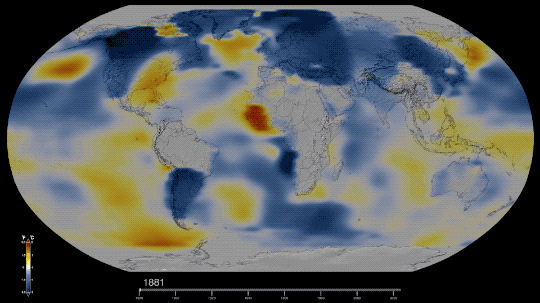
Six Answers to Questions You’re Too Embarrassed to Ask about the Hottest Year on Record
You may have seen the news that 2023 was the hottest year in NASA’s record, continuing a trend of warming global temperatures. But have you ever wondered what in the world that actually means and how we know?
We talked to some of our climate scientists to get clarity on what a temperature record is, what happened in 2023, and what we can expect to happen in the future… so you don’t have to!
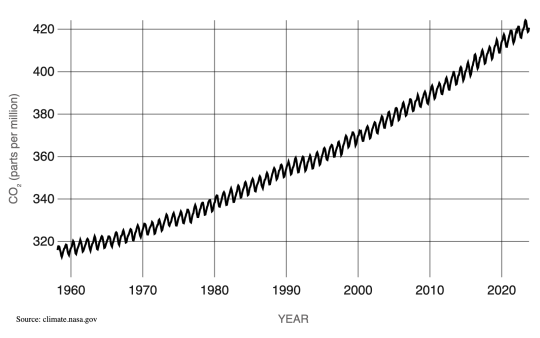
1. Why was 2023 the warmest year on record?
The short answer: Human activities. The release of greenhouse gases like carbon dioxide and methane into the atmosphere trap more heat near Earth’s surface, raising global temperatures. This is responsible for the decades-long warming trend we’re living through.
But this year’s record wasn’t just because of human activities. The last few years, we’ve been experiencing the cooler phase of a natural pattern of Pacific Ocean temperatures called the El Niño Southern Oscillation (ENSO). This phase, known as La Niña, tends to cool temperatures slightly around the world. In mid-2023, we started to shift into the warmer phase, known as El Niño. The shift ENSO brought, combined with overall human-driven warming and other factors we’re continuing to study, pushed 2023 to a new record high temperature.
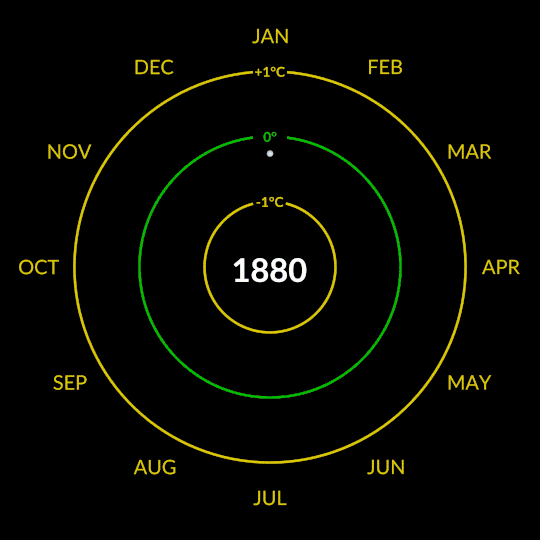
2. So will every year be a record now?
Almost certainly not. Although the overall trend in annual temperatures is warmer, there’s some year-to-year variation, like ENSO we mentioned above.
Think about Texas and Minnesota. On the whole, Texas is warmer than Minnesota. But some days, stormy weather could bring cooler temperatures to Texas while Minnesota is suffering through a local heat wave. On those days, the weather in Minnesota could be warmer than the weather in Texas. That doesn’t mean Minnesota is warmer than Texas overall; we’re just experiencing a little short-term variation.
Something similar happens with global annual temperatures. The globe will naturally shift back to La Niña in the next few years, bringing a slight cooling effect. Because of human carbon emissions, current La Niña years will be warmer than La Niña years were in the past, but they’ll likely still be cooler than current El Niño years.
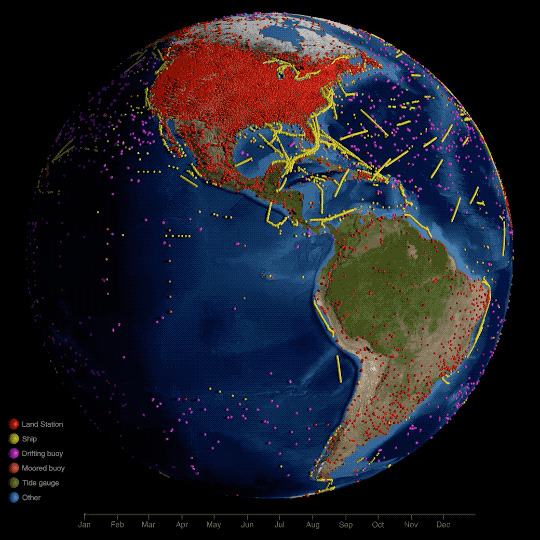
3. What do we mean by “on record”?
Technically, NASA’s global temperature record starts in 1880. NASA didn’t exist back then, but temperature data were being collected by sailing ships, weather stations, and scientists in enough places around the world to reconstruct a global average temperature. We use those data and our modern techniques to calculate the average.
We start in 1880, because that’s when thermometers and other instruments became technologically advanced and widespread enough to reliably measure and calculate a global average. Today, we make those calculations based on millions of measurements taken from weather stations and Antarctic research stations on land, and ships and ocean buoys at sea. So, we can confidently say 2023 is the warmest year in the last century and a half.
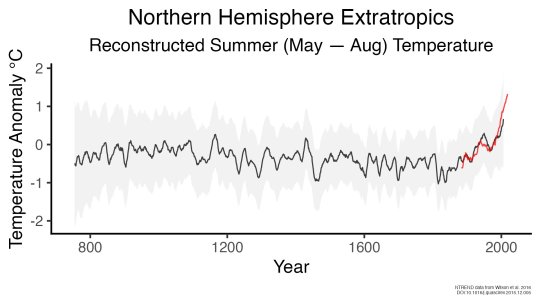
However, we actually have a really good idea of what global climate looked like for tens of thousands of years before 1880, relying on other, indirect ways of measuring temperature. We can look at tree rings or cores drilled from ice sheets to reconstruct Earth’s more ancient climate. These measurements affirm that current warming on Earth is happening at an unprecedented speed.
4. Why does a space agency keep a record of Earth’s temperature?
It’s literally our job! When NASA was formed in 1958, our original charter called for “the expansion of human knowledge of phenomena in the atmosphere and space.” Our very first space missions uncovered surprises about Earth, and we’ve been using the vantage point of space to study our home planet ever since. Right now, we have a fleet of more than 20 spacecraft monitoring Earth and its systems.
Why we created our specific surface temperature record – known as GISTEMP – actually starts about 25 million miles away on the planet Venus. In the 1960s and 70s, researchers discovered that a thick atmosphere of clouds and carbon dioxide was responsible for Venus’ scorchingly hot temperatures.
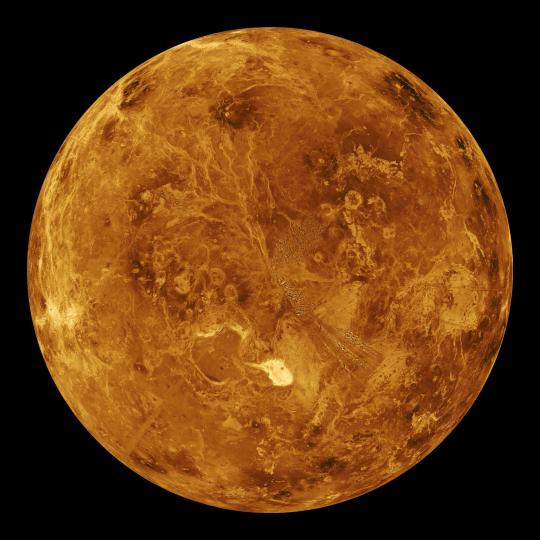
Dr. James Hansen was a scientist at the Goddard Institute for Space Studies in New York, studying Venus. He realized that the greenhouse effect cooking Venus’ surface could happen on Earth, too, especially as human activities were pumping carbon dioxide into our atmosphere.
He started creating computer models to see what would happen to Earth’s climate as more carbon dioxide entered the atmosphere. As he did, he needed a way to check his models – a record of temperatures at Earth’s surface over time, to see if the planet was indeed warming along with increased atmospheric carbon. It was, and is, and NASA’s temperature record was born.
5. If last year was record hot, why wasn’t it very hot where I live?
The temperature record is a global average, so not everywhere on Earth experienced record heat. Local differences in weather patterns can influence individual locations to be hotter or colder than the globe overall, but when we average it out, 2023 was the hottest year.
Just because you didn’t feel record heat this year, doesn’t mean you didn’t experience the effects of a warming climate. 2023 saw a busy Atlantic hurricane season, low Arctic sea ice, raging wildfires in Canada, heat waves in the U.S. and Australia, and more.

And these effects don’t stay in one place. For example, unusually hot and intense fires in Canada sent smoke swirling across the entire North American continent, triggering some of the worst air quality in decades in many American cities. Melting ice at Earth’s poles drives rising sea levels on coasts thousands of miles away.

6. Speaking of which, why is the Arctic – one of the coldest places on Earth – red on this temperature map?
Our global temperature record doesn’t actually track absolute temperatures. Instead, we track temperature anomalies, which are basically just deviations from the norm. Our baseline is an average of the temperatures from 1951-1980, and we compare how much Earth’s temperature has changed since then.
Why focus on anomalies, rather than absolutes? Let’s say you want to track if apples these days are generally larger, smaller, or the same size as they were 20 years ago. In other words, you want to track the change over time.
Apples grown in Florida are generally larger than apples grown in Alaska. Like, in real life, how Floridian temperatures are generally much higher than Alaskan temperatures. So how do you track the change in apple sizes from apples grown all over the world while still accounting for their different baseline weights?
By focusing on the difference within each area rather than the absolute weights. So in our map, the Arctic isn’t red because it’s hotter than Bermuda. It’s red because it’s gotten relatively much warmer than Bermuda has in the same time frame.
Want to learn more about climate change? Dig into the data at climate.nasa.gov.
Make sure to follow us on Tumblr for your regular dose of space!
3K notes
·
View notes
Text
One of the things I love about Star Trek is how some of the characters use their free time, to name a few: ● Kirk spent his free time playing chess with Spock, reading books or collecting antiquities. ● Picard spent his free time reading poetry, "ancient" literature, looking at archaeological items or on the holodeck playing detective. ● Janeway tended to spend it playing mystery novels on the holodeck or playing an extreme version of tennis with Seven. ● Data would spend it with Geordi, either in engineering helping out or playing Sherlock Holmes mysteries, he would also play with his cat or practise drawing ● Seven watched the stars, studied anything that caught her attention. ● Beverly practised yoga and prepared plays. ● Riker practises the trombone ● Sulu spends time with her family or practises fencing ● Uhura practices with musical instruments Everyone has time to dedicate to themselves, in things they really like, beyond their ranks and their important positions they dedicate to enjoy their lives, they don't leave their responsibilities but they also don't forget about themselves and their "humanity" to dedicate themselves to the arts or "silly" moments that are just for fun It is the message that "Being professionals or adults should not stop us from enjoying our lives and being ourselves".
291 notes
·
View notes
Text


Research Discovers Ancient Egyptian Mummies Smell Nice
At first whiff, it sounds repulsive: sniff the essence of an ancient corpse.
But researchers who indulged their curiosity in the name of science found that well-preserved Egyptian mummies actually smell pretty good.
“In films and books, terrible things happen to those who smell mummified bodies,” said Cecilia Bembibre, director of research at University College London’s Institute for Sustainable Heritage. “We were surprised at the pleasantness of them.”
“Woody,” “spicy” and “sweet” were the leading descriptions from what sounded more like a wine tasting than a mummy sniffing exercise. Floral notes were also detected, which could be from pine and juniper resins used in embalming.
The study published Thursday in the Journal of the American Chemical Society used both chemical analysis and a panel of human sniffers to evaluate the odors from nine mummies as old as 5,000 years that had been either in storage or on display at the Egyptian Museum in Cairo.
The researchers wanted to systematically study the smell of mummies because it has long been a subject of fascination for the public and researchers alike, said Bembibre, one of the report’s authors. Archeologists, historians, conservators and even fiction writers have devoted pages of their work to the subject — for good reason.
Scent was an important consideration in the mummification process that used oils, waxes and balms to preserve the body and its spirit for the afterlife. The practice was largely reserved for pharaohs and nobility and pleasant smells were associated with purity and deities while bad odors were signs of corruption and decay.
Without sampling the mummies themselves, which would be invasive, researchers from UCL and the University of Ljubljana in Slovenia were able to measure whether aromas were coming from the archaeological item, pesticides or other products used to conserve the remains, or from deterioration due to mold, bacteria or microorganisms.


“We were quite worried that we might find notes or hints of decaying bodies, which wasn’t the case,” said Matija Strlič, a chemistry professor at the University of Ljubljana. “We were specifically worried that there might be indications of microbial degradation, but that was not the case, which means that the environment in this museum, is actually quite good in terms of preservation.”
Using technical instruments to measure and quantify air molecules emitted from sarcophagi to determine the state of preservation without touching the mummies was like the Holy Grail, Strlič said.
“It tells us potentially what social class a mummy was from and and therefore reveals a lot of information about the mummified body that is relevant not just to conservators, but to curators and archeologists as well,” he said. “We believe that this approach is potentially of huge interest to other types of museum collections.”
Barbara Huber, a postdoctoral researcher at Max Planck Institute of Geoanthropology in Germany who was not involved in the study, said the findings provide crucial data on compounds that could preserve or degrade mummified remains. The information could be used to better protect the ancient bodies for future generations.
“However, the research also underscores a key challenge: the smells detected today are not necessarily those from the time of mummification,” Huber said. “Over thousands of years, evaporation, oxidation, and even storage conditions have significantly altered the original scent profile.”
Huber authored a study two years ago that analyzed residue from a jar that had contained mummified organs of a noblewoman to identify embalming ingredients, their origins and what they revealed about trade routes. She then worked with a perfumer to create an interpretation of the embalming scent, known as “Scent of Eternity,” for an exhibition at the Moesgaard Museum in Denmark.
Researchers of the current study hope to do something similar, using their findings to develop “smellscapes” to artificially recreate the scents they detected and enhance the experience for future museumgoers.
“Museums have been called white cubes, where you are prompted to read, to see, to approach everything from a distance with your eyes,” Bembibre said. “Observing the mummified bodies through a glass case reduces the experience because we don’t get to smell them. We don’t get to know about the mummification process in an experiential way, which is one of the ways that we understand and engage with the world.”



#Research Discovers Ancient Egyptian Mummies Smell Nice#Egyptian Museum in Cairo#ancient tombs#ancient graves#grave goods#ancient artifacts#archeology#history#history news#ancient history#ancient culture#ancient civilizations#ancient egypt#egyptian history#egyptian hieroglyphs#egyptian art#ancient art
34 notes
·
View notes
Text
Global sea temperatures reached an all-time high in 2024, according to a new study published Friday in the journal Advances in Atmospheric Sciences.
The 54 researchers from seven countries deployed thousands of instruments to collect ocean data both at the surface and up to 2,000 meters below the surface — the latter called ocean heat content — covering all the world’s oceans.
“The broken records in the ocean have become a broken record,” professor Lijing Cheng with the Institute of Atmospheric Physics at the Chinese Academy of Sciences, said in a press release.
The researchers found that all three major metrics they analyzed broke records this year: global sea surface temperature, average global sea surface temperature and the temperature of water up to 2,000 meters below the surface.
40 notes
·
View notes